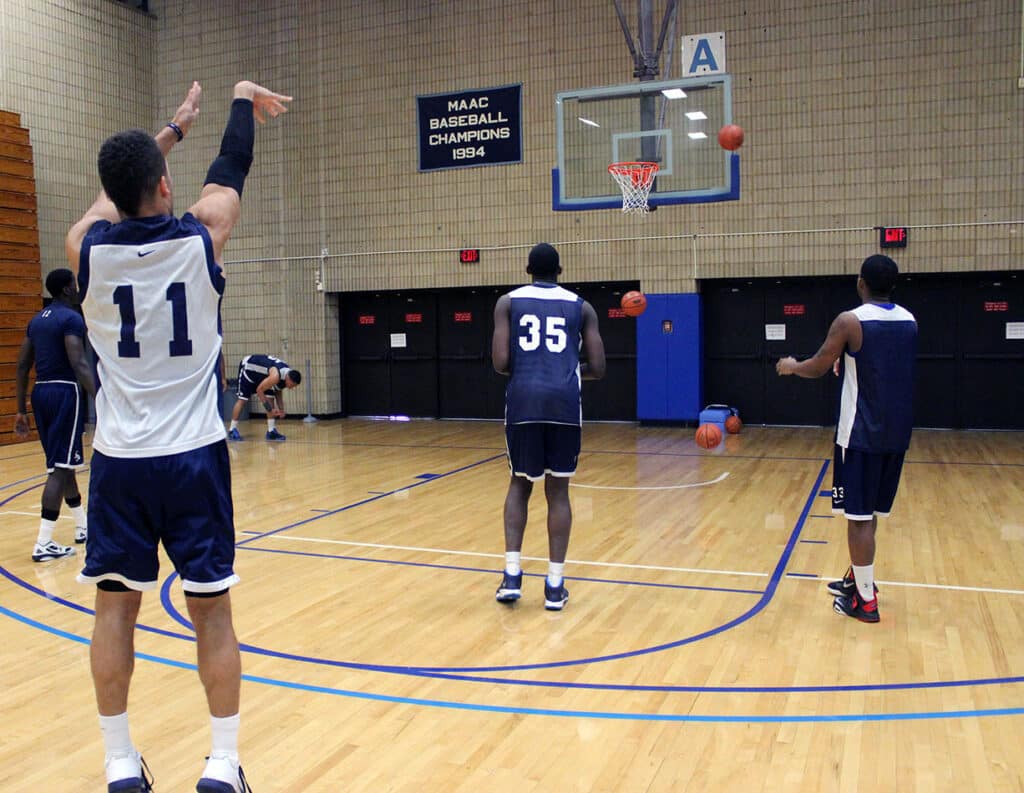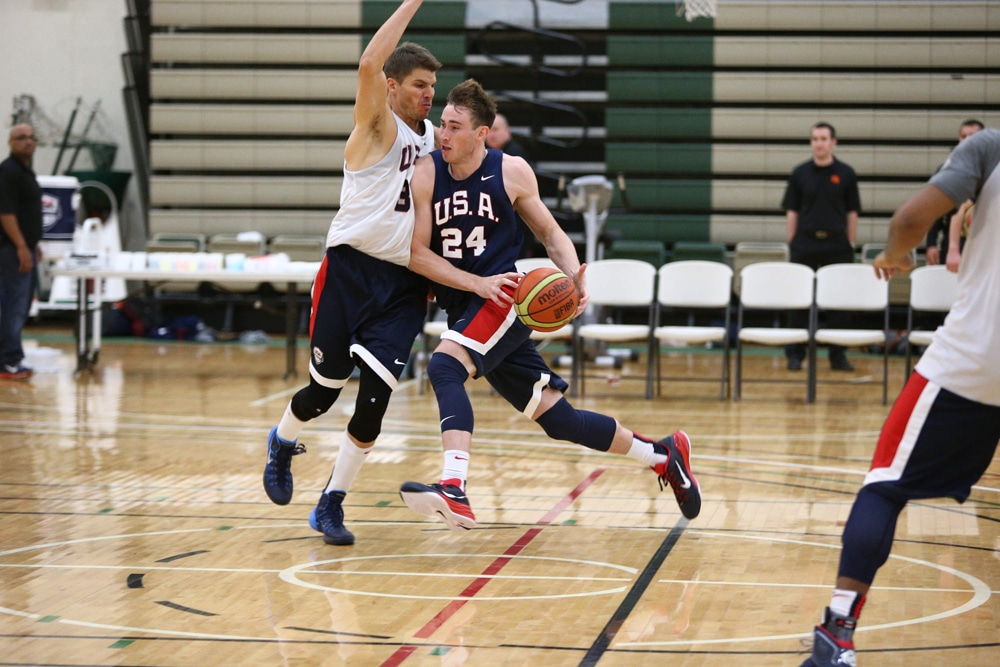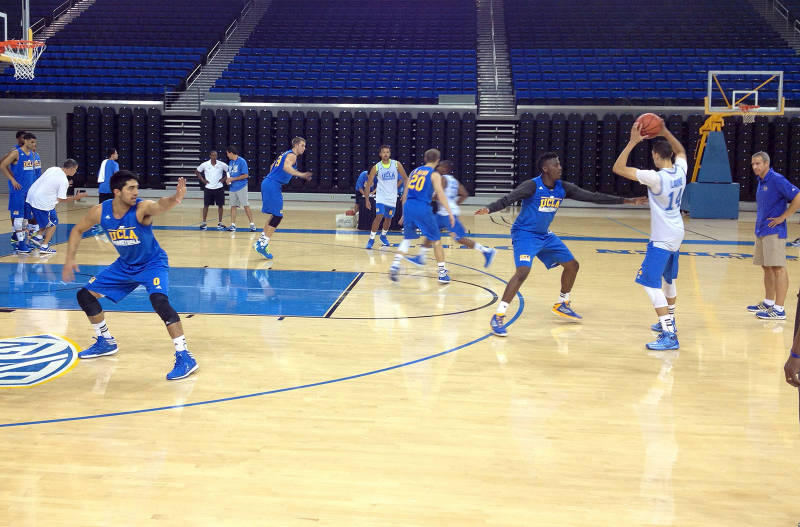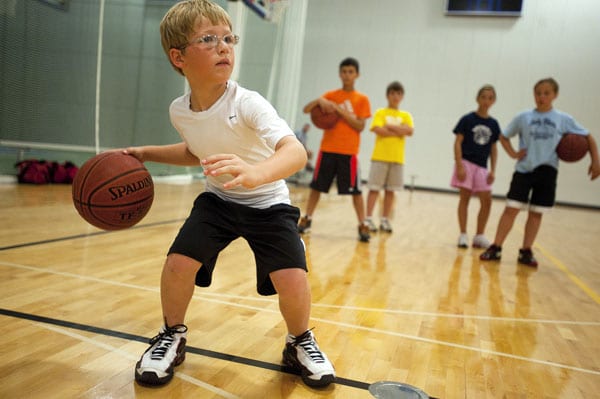
How to Use Practice Time to Build Team Confidence: Getting the Reps and Feedback Your Players Need
Building team confidence is essential for achieving success on the basketball court. Confidence influences how players perform under pressure, interact with teammates, and approach challenges.
Utilizing practice time effectively can foster this confidence, making your team more cohesive and resilient. Here’s how you can strategically use practice time to build and enhance team confidence.

1. Create a Positive Practice Environment
A supportive and positive practice environment encourages players to take risks and believe in their abilities. Here’s how to cultivate this environment:
Celebrate Successes
Recognizing progress and accomplishments boosts morale. Celebrate individual and team achievements during practice, no matter how small. This could be as simple as acknowledging a well-executed drill or a good defensive play. You might establish a “success wall” where players can post achievements, such as improved shooting percentages or successful teamwork moments. This visual representation of success reinforces positive behaviors and creates a motivating atmosphere.
Encourage Constructive Feedback
Feedback is crucial for development, but how it’s delivered can significantly impact confidence. Provide feedback in a constructive manner by focusing on what players are doing well before addressing areas for improvement. For example, if a player misses a shot, you could first highlight their good form before discussing adjustments. This approach helps maintain motivation and builds confidence in their abilities.
Promote a Growth Mindset
Encourage players to view mistakes as opportunities for growth rather than failures. Share examples from professional basketball where players have overcome challenges through perseverance. Create a culture where players feel safe to take risks and make mistakes during practice, reinforcing the idea that effort and learning are more important than perfection. Consider implementing a “mistake of the day” discussion, where players can reflect on what they learned from their errors.

2. Incorporate Confidence-Building Drills
Design practice drills specifically aimed at building confidence. Here are a few types of drills to consider:
Success-Oriented Drills
Use drills that allow players to experience success frequently. For instance, incorporate shooting drills that start with close-range shots before gradually moving to longer distances. Players can build confidence as they see immediate improvements in their shooting skills. You might also implement a “make X shots in a row” challenge, allowing players to focus on success rather than failure.
Competitive Drills
Implement competitive drills that simulate game situations. Competitive environments can stimulate a sense of urgency and excitement, helping players build confidence in their skills under pressure. For example, set up a mini-tournament during practice with teams competing in short scrimmages. This can help players practice teamwork, strategy, and composure while boosting their confidence through positive performance outcomes.
Role-Specific Drills
Tailor drills to individual roles and strengths. Ensure players excel in their specific roles, whether they are shooters, playmakers, or defensive specialists. When players feel competent in their designated roles, their overall confidence on the court increases. For instance, you might create specific drills for point guards that focus on decision-making and play-calling, while wings work on shooting off screens.
3. Encourage Team Communication and Support
Effective communication and team support contribute significantly to building confidence. Consider the following strategies:
Promote Open Communication
Encourage players to communicate openly with each other. Foster an environment where players feel comfortable sharing ideas, asking questions, and giving feedback. Effective communication helps players understand their roles, expectations, and how to support one another. Consider implementing team huddles at the end of practice to discuss what worked well and areas for improvement, fostering a collaborative atmosphere.
Foster Team Support
Create opportunities for players to support and encourage each other. Team-building activities and collaborative drills enhance team cohesion and confidence. For example, you could pair players of different skill levels to work on drills together, allowing more experienced players to mentor their teammates. Recognize and reward acts of encouragement and teamwork, reinforcing the importance of support in building collective confidence.

4. Use Practice Situations to Prepare for Game Scenarios
Simulating game scenarios in practice helps players build confidence in their ability to handle real-game situations. Here’s how to effectively implement this strategy:
Simulate Pressure Situations
Create practice scenarios that replicate high-pressure game situations, such as last-minute plays or close games. Use countdowns, score limits, or game-like scenarios to add pressure. For example, during a scrimmage, set the score at a tie with only a few minutes remaining, forcing players to strategize and perform under pressure. This preparation helps players feel more confident when facing similar situations in actual games.
Implement Game-Like Drills
Incorporate drills that mimic game conditions, such as fast breaks, transition plays, and half-court offense. By creating realistic practice scenarios, players become more comfortable with executing their skills in a game setting. Use game footage to analyze successful plays and have players replicate those scenarios during practice. This practice will instill a sense of preparedness and confidence in their abilities when it matters most.
Encourage Problem-Solving
During practice, present players with challenges that require strategic thinking and teamwork. For example, set up a situation where they need to come back from a deficit, forcing them to think critically and collaborate effectively. After the drill, hold a discussion to reflect on what worked and what didn’t, reinforcing their ability to adapt and grow.
5. Set Individual and Team Goals
Setting achievable goals can significantly enhance confidence for both individuals and the team. Here’s how to approach goal-setting:
Individual Goals
Work with each player to set specific, measurable, achievable, relevant, and time-bound (SMART) goals. These goals could focus on improving shooting percentages, increasing assists, or enhancing defensive skills. Regularly revisit these goals throughout the season, providing opportunities for players to track their progress and celebrate achievements.
Team Goals
Establish team goals that reflect the collective aspirations of the group. This might include winning a specific number of games, improving team chemistry, or executing a new offensive strategy. Ensure that these goals are communicated clearly and regularly reinforced during practices. Celebrate milestones as a team to foster a sense of unity and shared purpose.

6. Encourage Reflection and Self-Assessment
Encouraging players to reflect on their performances can foster self-awareness and confidence:
Post-Practice Reflection
At the end of each practice, allocate time for players to reflect on their performance. This could involve individual journaling or group discussions. Prompt players to consider what they did well, what they learned, and what they can improve upon. This practice not only reinforces positive behaviors but also encourages a growth mindset.
Self-Assessment Tools
Provide players with self-assessment tools to evaluate their skills and progress. Create simple rubrics that focus on key performance indicators (KPIs) such as effort, execution of skills, and teamwork. By engaging in self-assessment, players can take ownership of their development and build confidence through personal accountability.
How to Use Practice Time to Build Team Confidence Conclusion:
Building team confidence through effective practice strategies is crucial for basketball success. By creating a positive environment, incorporating confidence-building drills, fostering communication and support, simulating game scenarios, setting goals, and encouraging reflection, you can cultivate a confident and resilient team.
As players develop confidence in their skills and in each other, they will be better equipped to face challenges on and off the court, leading to improved performance and a more cohesive team dynamic.



